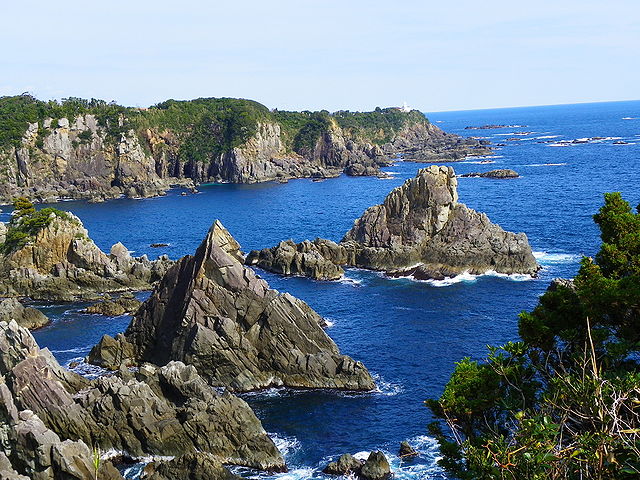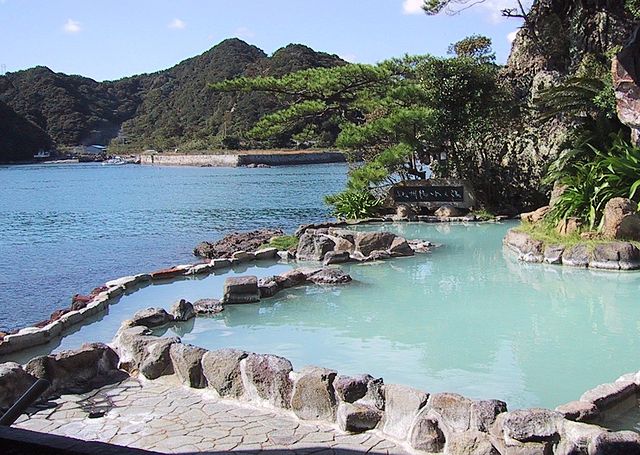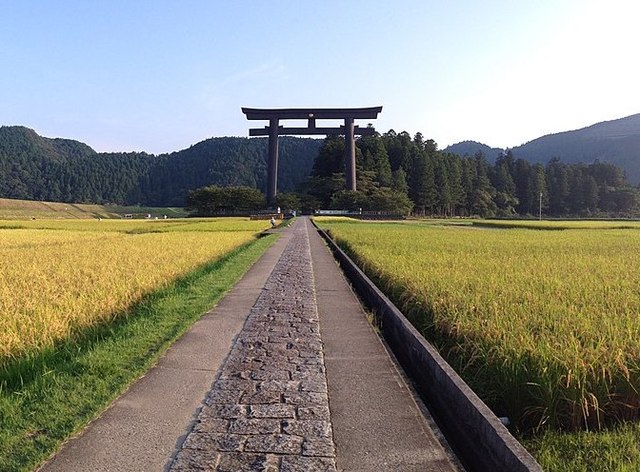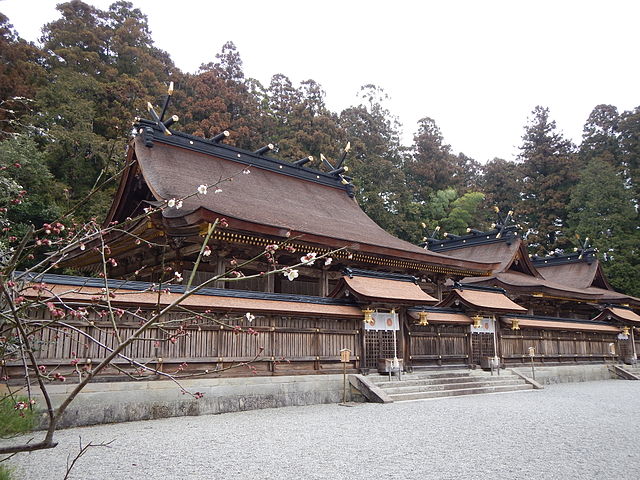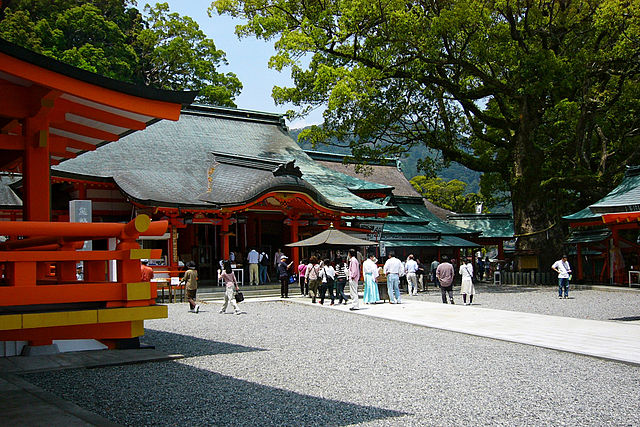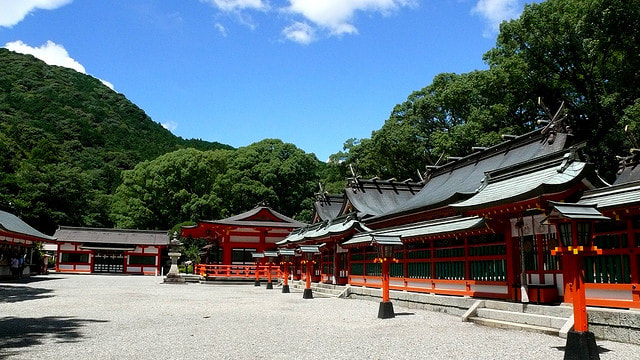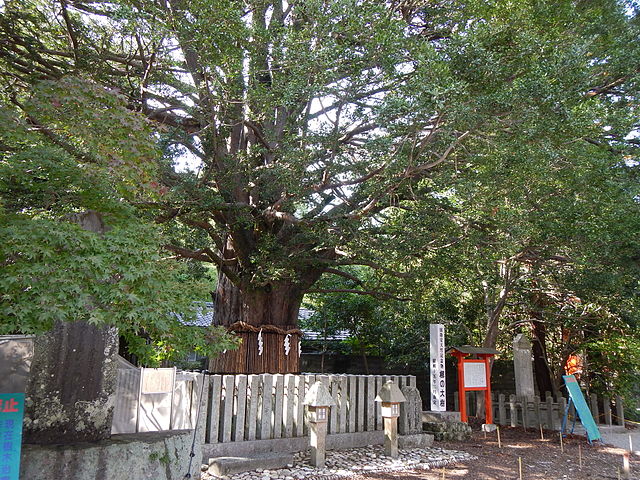|
Wakayama is particularly mountainous and the JR train lines trace the coast, providing breathtaking scenes of dramatic, rocky coastline bordered by lush, green mountains and pastoral small towns.
The Kumano area is located around the southern tip of the Kii Peninsula and spans Wakayama and Mie Prefectures, though most of the attractions and religious sites are in Wakayama. The ancient Buddhist pilgrimage route connecting Japan's most sacred temples and shrines, the Kumano-Kodo, winds through the mountains here. |
|
Made up of several routes of various difficulties through the south of Wakayama prefecture, the hike was originally leading to three major Japanese shrines: Hongu Taisha, Nachi Taisha and Hayatama Taisha, which collectively known as the Kumano Sanzan.
The Shrines lie at between 20 and 40 kilometers of distance one from the other. For longer than thousand years pilgrims have walked days to reach the sacred sites of the Kumano area. The shrines are even older, with mention in Japan's founding mythology. |
|
The routes are dotted with numerous Onsen towns, scenic valleys and restaurants serving rustic Japanese cuisine. Towns such as Shirahama and Nachi-Katsuura offer Hot springs, while Kushimoto features coastal scenery.
The pilgrimage route connects many holy sites across several prefectures, but it is historically begun and ended at Mount Koya. The route runs through central Wakayama "through Hongu" and over to Nachi-katsuura before continuing north to Mie prefecture. Kumano's religious treasures and pilgrimage routes are designated a UNESCO World Heritage Site, which also includes neighboring Koyasan, Yoshino and Ominesan. |
|
Kumano Hongu Taisha is located deep in the rugged mountains of the Kii Peninsula. It serves as the head shrine of over 3000 Kumano shrines across Japan.
In front of Oyu no Hara stands the biggest Torii in the world, which at 33 meters tall, dwarfs visitors passing under it. It signifies the division of the secular and the spiritual worlds. Unlike the vermilion pavilions of the pagoda in Nachi or Hayatama Shrine, the Kumano Hongu Taisha is an austere building, made of raw wood with a thatched roof, typical of the early days of Shintoism. |
|
Due to floods in 1889, the shrine was moved from its original location at Oyu no Hara to its present site one kilometer away.
There are three Onsen near Hongu: Yunomine, Kawayu and Wataze. The first two are small Onsen towns, while Wataze Onsen consists of only a single hotel complex, Watarase Onsen, which is known for having the largest outdoor bath in western Japan. The bath is also open to non-staying guests. Hongu Taisha is located at the center of the Kumano Kodo network of pilgrimage routes. Hongu Taisha can be accessed by bus from Kii-Tanabe Station and it takes about 2 hours. From Shingu Station buses reach Hongu Taisha in about 80 minutes. |
|
Kumano Nachi Taisha is an example of Buddhist and Shinto syncretism nestled in the Kii Mountains. The buildings of both the shrine and the temple are impressive, and among the buildings of Seigantoji there is a three-story pagoda.
The Daimon-zaka route paved with stone and lined with massive evergreens, leads 600 meters up to the gates of Nachi Taisha. Cedar forests surround the site. A short distance from Seigantoji and Nachi Taisha is the 133 meters Nachi Fall, Japan’s tallest waterfall. |
|
Kumano Nachi Taisha Shrine can be reached by bus from both Kii-Katsuura Station "takes about 30 minutes", and Nachi Station "takes about 20 minutes".
Buses stop at the base of the Daimon-zaka trail and at the entrance to Nachi Waterfall before terminating at the base of Nachi Shrine. There is an admission fee of 300 yen for the viewing platform of Nachi Waterfall, the Pagoda and the treasure house each. |
|
Kumano Hayatama Taisha is located in Shingu City on the southeast coast of the Kii Peninsula, near the mouth of the Kumano River where the water from the Kii Mountains flows into the ocean.
Over the centuries pilgrims including Emperors and Shoguns have left many offerings at the shrine and the most important are on display in the Shrine's treasure house. The collection housed in this small museum is impressive, with more national treasures than most major museums. |
|
Once past the gate of the sacred precinct, you will discover one of the main elements of the site; the Nagi no ki, an ancient tree "estimated to be over 800 years old", is located inside the shrine compound and is considered sacred.
A Shinto creation myth claims that three kami "Shinto deities" descended to earth on a rock not far from the shrine. As a result of its divine contact, the rock has been worshiped as a sacred object. The Shrine is free to visit but the treasure house is 500 yen to enter for adults. Hayatama Taisha can be reached in a 15 minutes’ walk from JR Shingu Station. |
Kumano "Kumano Sanzan" - Wakayama Prefecture


